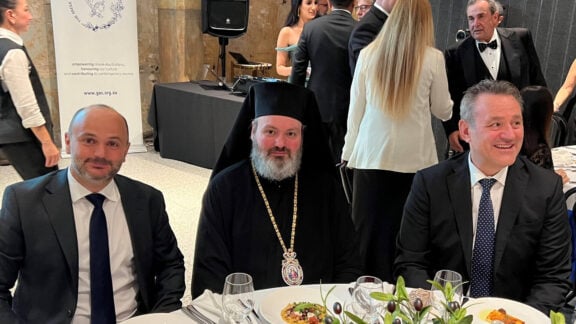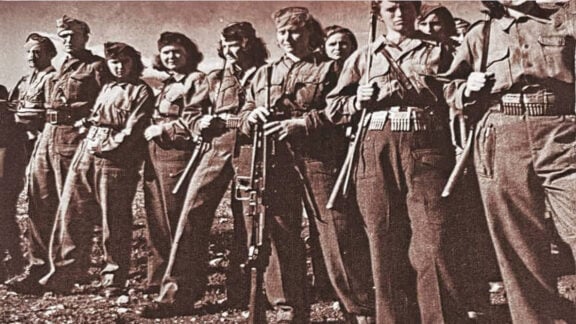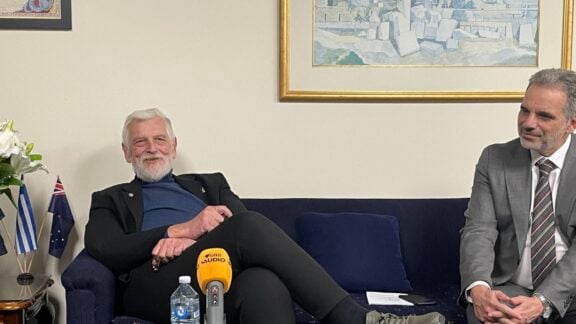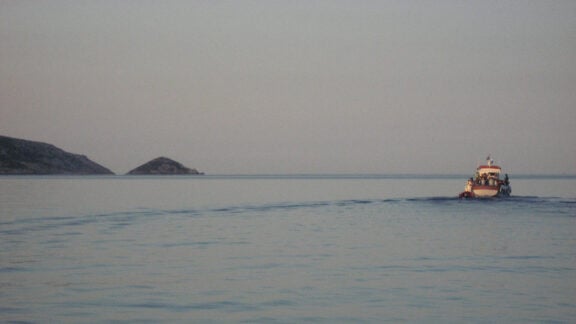The commemoration of Anzac Day in Brisbane was given an added boost last week with the display of the Imbros and Gallipoli exhibition at the city’s iconic Greek Club in South Brisbane. This display follows on from its launch in Melbourne’s Parkdale last year and recent successful display as part of the Greek Festival of Sydney.
The exhibition comprises 21 large panels depicting the story of the northern Aegean Island of Imbros (now renamed Gokzeada) and its role in the Gallipoli campaign and Australia’s Anzac story from 1915-16. The panels are beautifully prepared, combining many archival photographs from the time – many never before published – with explanatory historical text drawn from documentary archives from across the world. The exhibition also includes a companion book, entitled From Imbros Over The Sea.

The exhibition is the work of historian and author Jim Claven OAM who has been researching the Hellenic link to Anzac of many years. Claven was commissioned by the Imvrian Society of Melbourne to curate and produce the exhibition and associated book. The exhibition and book were produced with the support of the Victorian Government, Victorian Veterans Council as well as a number of organisational and individual donors.
The exhibition was brought to Brisbane by the Greek Orthodox Community of St George Brisbane, with the support of the local Hellenic RSL Sub Branch. It was launched on a recent Friday night and was open to the public over the subsequent weekend.

The evening launch was well attended. These included the new President of the Greek Orthodox Community of St George Brisbane Freda Valassakis, the Greek Community’s Cultural Committee Secretary Tom Drakopoulos, the President and Secretary of Brisbane’s Hellenic RSL Sub Branch Vlas Efstathis and Harry Bertsos, Dr Amelia Brown and James Donaldson from the University of Queensland and humanitarian and disaster response nurse and paramedic Helen Zahos.
The crowd made their way through the extensive display, reading the panels and admiring the many photographs and artworks depicting Imbros, both old and new. The exhibition was complemented by an audio visual display put together by George Xinos, combining modern photographs of Imbros taken by Melbourne photographer Kate Donnelly with music from the Island. Whether the observers had a connection to Imbros or not, this moving combination of history, photographs and music brought to life this little known aspect of the Hellenic connection to Gallipoli and Anzac.
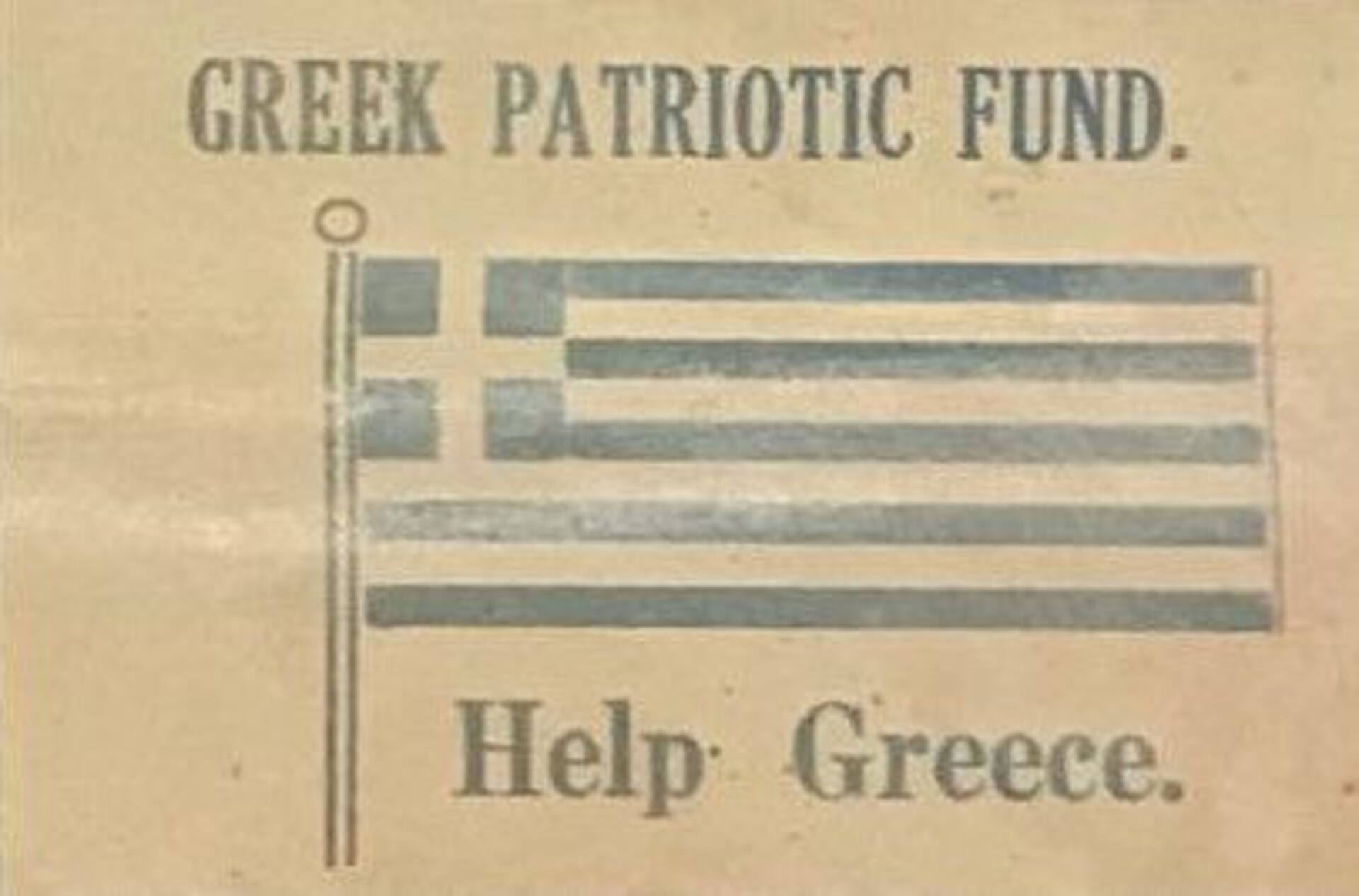
Tom Drakopoulos, the Secretary of the Greek Community’s Cultural Committee, was master of ceremonies for the launch. Speakers included Valassakis on behalf of the Greek Orthodox Community of St George Brisbane and George Xinos representing the Imvrian Society of Melbourne, followed by Claven’s presentation explaining the inspiration for and background to the creation of the exhibition.
Valassakis welcomed all to the Greek Club for this important exhibition which was a key part of the Community’s cultural program. The Community supported such endeavours as they promoted awareness both of aspects of our Hellenic heritage but also of the rich connection between Australia and Greece. She hoped that the Exhibition would stimulate viewers on their own journeys of discovery into this rich connection.

Xinos expressed the gratitude of the Imvrian Society of Melbourne to the Greek Orthodox Community of St George Brisbane for its support in bringing the exhibition to their city. It is nearly two years since discussions began in Melbourne as to the possibility of creating the Imbros and Gallipoli exhibition and what is on display is the result. He said that the Society was proud of the work undertaken by Claven in researching and curating the exhibition as well as the associated book, telling the story of Imbros and Gallipoli for the first time.
Claven explained how his years of research into the role of the nearby island of Lemnos in the Gallipoli campaign had provided hints for him into the role of Imbros and its people in the same campaign. And like his research into Lemnos, it was his viewing of the many photographs and artworks from the time that drew him closer to the story. Some of these photographs were taken by famous individuals – like the Australians Charles Bean and Philip Schuler – others by amateur soldier photographers like the 6th Battalion’s Private John Rogers. However one of the most important collections concerning Imbros is that by a young British Royal Nay Air Service officer and photographer Bill Pollard who captured many scenes of the Island not depicted by anyone else.

Searching through the documentary archives in Australia and the UK, Claven explained how he was able to piece together some of the key aspects of the impact of the campaign on the Island – whether these were found in Australian army war diaries, published memoirs and diaries, as well as in the many soldier’s letters that have survived in the records of Australia’s National Archives. He also thanked his good friend David Sanderson in England who was able to help Jim research the only surviving official maps of the Allied camps at Imbros which are preserved in the National Archives in London. These archival sources are the basis for the new maps created for the exhibition by Claven and Xinos.

He explained that the exhibition is the result of all this research along with Claven’s field research on Imbros, where he was able to visit many of the sites connected to the Gallipoli campaign and its impact on the Island. He described how he had walked the shores of Kephalos Bay and nearby Aliki Bay, the sites of the Allied camps that were created around its shores and into the surrounding hills, the air fields and cemetery and on to the villages visited by the Australian and other Allied soldiers, from then Panagia (now renamed Gokzeada Town) to Castro (now Kalekoy) and more. He talked of the warm welcome he received from the villagers of Agios Theodorou, the home of the Greek Orthodox Patriarch Bartholomew I of Constantinople and the local Nostos Café!
In conclusion he expressed the hope that a new Gallipoli historical trail could someday be created on the Island, identifying and linking some of the key campaign related sites on the Island.

“As someone who was engaged as the historical consultant for the Australian Government’s Lemnos Remembrance Trail, I am keenly aware of the opportunities that such a trail could create for Imbros and all its residents – both to create awareness of this important part of the Island’s history but also as an economic boom to the Island. Some 200,000 commemorative visitors come to the Gallipoli Peninsula every year. Surely some of them could be enticed to come to this lovely island a short distance by ferry with its unique history”, he said.
Claven ended his address by thanking the Imvrian Society of Melbourne for their support and in particular their project officer George Xinos who had provided immense support for the project, including concerning the layout of the display panels. He also thanked the Greek Orthodox Community of St George Brisbane and the local Hellenic RSL Sub Branch for their support of the exhibition. “Without the community spirit of these organisations this story would not have been able to come to Brisbane,” he said. He particularly thanked Tom Drakopoulos for all his assistance with hosting the exhibition at the Greek Club.

Claven states that he enjoyed many stimulating discussions during the launch, such as on medical services in war with the Hellenic RSL Sub Branch President Vlas Estathis who has an Australian army medical background, with Queensland University’s Donaldson’s on his current project on the WW1and antiquities as well as with Zahos on ensuring the legacy of Brisbane nursing Matron Grace Wilson’s service on Lemnos is not forgotten.
Claven said that one of the privileges of the night was the opportunity to meet Ann Rammerath (nee Kastrissos). Ann lives on Imbros Street in Brisbane and has been in communication with him over the last few months. She brought along a photograph of her mother Irene Freeleagus – whose heritage was from Kythera – during one of the WW2-era Greek Patriotic Fund fundraising events held in Brisbane, just as they were held in Melbourne, Sydney and other towns and cities across Australia.

However perhaps the most amazing aspect of the event was how the exhibition brought together a number of Queensland’s Imbrian community. These included Esther Baklis, Denis and Irene Cayas as well as Sofoklis “Steve” Doulgeris and his wife Drosoula who both went to school on Imbros with Xinos’ father Arthur – it’s a small world!
Many expressed their appreciation of seeing the old photographs of their homeland, sparking many memories and conversations. Many spoke of their regular returns to Imbros and their former villages. The Imbrians expressed their interest in Jim Claven’s proposal for the creation of a Gallipoli historical trail on the Island, for its heritage value and as an economic boost to all who call Imbros home.
Those interested in purchasing a copy of the Exhibition booklet should contact George Xinos via email.
Melbourne Showing
The Imbros & Gallipoli Exhibition will have its next showing at Melbourne’s Greek Centre. Claven will make a presentation on the role of Imbros in the Gallipoli campaign at his presentation at the Greek Centre on Thursday 23 May, commencing 6.30pm. This will be followed by the display of the exhibition itself on the subsequent weekend (25-26 May) at the Mezzanine floor of the Greek Centre. More information soon on the Greek Centre website.

